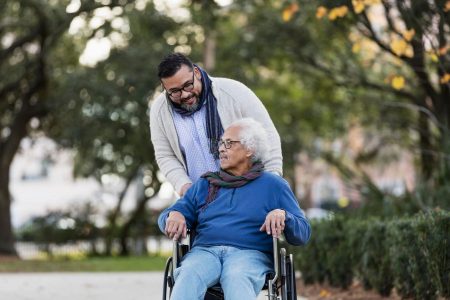Ask family caregivers what sort of government support they want and their answer is clear: They want upfront cash. Not bigger future Social Security benefits. Not respite care or tax credits, not paid family leave, or even reimbursement for out-of-pocket costs. They want cash.
That, at least, were the preferences of participants in four focus groups described in a new research paper by Marc Cohen and colleagues for the Center for Retirement Research at Boston College.
Forty-four percent of the participants favored cash payments. The next-most-popular idea was reimbursement of caregiving costs. But it was favored by only about a quarter of participants.
All other suggestions, such as income tax credits, requiring Social Security to count unpaid family caregiving time when it calculates retirement benefits, and paid respite care received the support of 12% or less. Remarkably, almost no participants favored paid family leave.
Why Cash?
The results confirm a 2022 caregiver study by Pamela Nadash, Eileen Tell, and Taylor Jansen of the University of Massachusetts Boston. It too found that family members overwhelmingly want compensation for the time they spend caring for loved ones.
If you are not familiar with family caregiving, this may sound like greed—just another group looking for a government handout or, if you prefer, welfare.
But consider, for a moment, the financial burden caregiving places on these family members.
They often pay out of pocket for the care of relatives. In 2021, AARP estimated caregivers spent an average of more than $7,200 to support family members, though other studies estimate much less, only about $1,000.
The Price Paid By Working Caregivers
Many family caregivers sacrifice their paychecks, either by reducing hours or even quitting paid work, because it is impossible to care for relatives and hold down a paying job. That not only means lost wages, but also fewer contributions to retirement savings and lower future Social Security benefits.
A 2021 study by the Rosalynn Carter Institute for Caregivers found that one in five full-time workers cares for a family member with a serious illness or disability. Nearly 20% of them said they had to quit a job to care for a relative and 40% said they had to go to part-time work.
More than half said they lost income due to missing work and nearly half said they passed up opportunities for promotions.
The Focus Groups
Twenty-five family caregivers participated in the recent focus groups. Notably, the project oversampled Black people, low-income people, and men. Their average age was about 50, about 60% worked while 20% were retired. The median income of participants was about $75,000.
Black and Hispanic caregivers tend to be younger than their White counterparts, provide higher levels of care, and are more likely to work only part time or not all—perhaps due to their caregiving burdens.
The Options
The CRR project based the options it presented to focus group members on existing, but limited, government programs. Interestingly, the participants’ preferences generally tracked with the financial value of stylized versions of those benefits.
For example, the cash option was assumed family caregivers would be paid $15-an-hour for average of 76 hours per month. The researchers estimated its lifetime value at about $76,000.
Most states have Medicaid-based programs that pay family caregivers, but the payments are modest and often come with strict limitations. In many states, children are eligible for compensation but spouses are not. And, of course, middle-income families not on Medicaid are ineligible.
By contrast, a $500 family caregiver tax credit would have an average lifetime value of only about $3,500. President-elect Trump proposed such a credit during the 2024 campaign, though he did not specify an amount.
Counting family caregiving time for Social Security benefits would land somewhere in the middle, with an average lifetime benefit of about $11,000. However, it only would be available to those with paid work, who could build up remaining Social Security hours. And most caregivers would not receive those added benefits until they reach at least age 65, which may be decades after their caregiving experience.
Surprisingly, at least to me, almost none of the focus group participants were interested in paid leave, though 13 states and the District of Columbia have adopted such programs and a national leave effort has been a top priority of President Biden and many congressional Democrats.
Any of the additional supports presented to the focus groups would be an improvement over existing supports. But the family caregivers in these groups were unambiguous: The most important thing government can do for them is to provide a cash benefit.
Read the full article here









